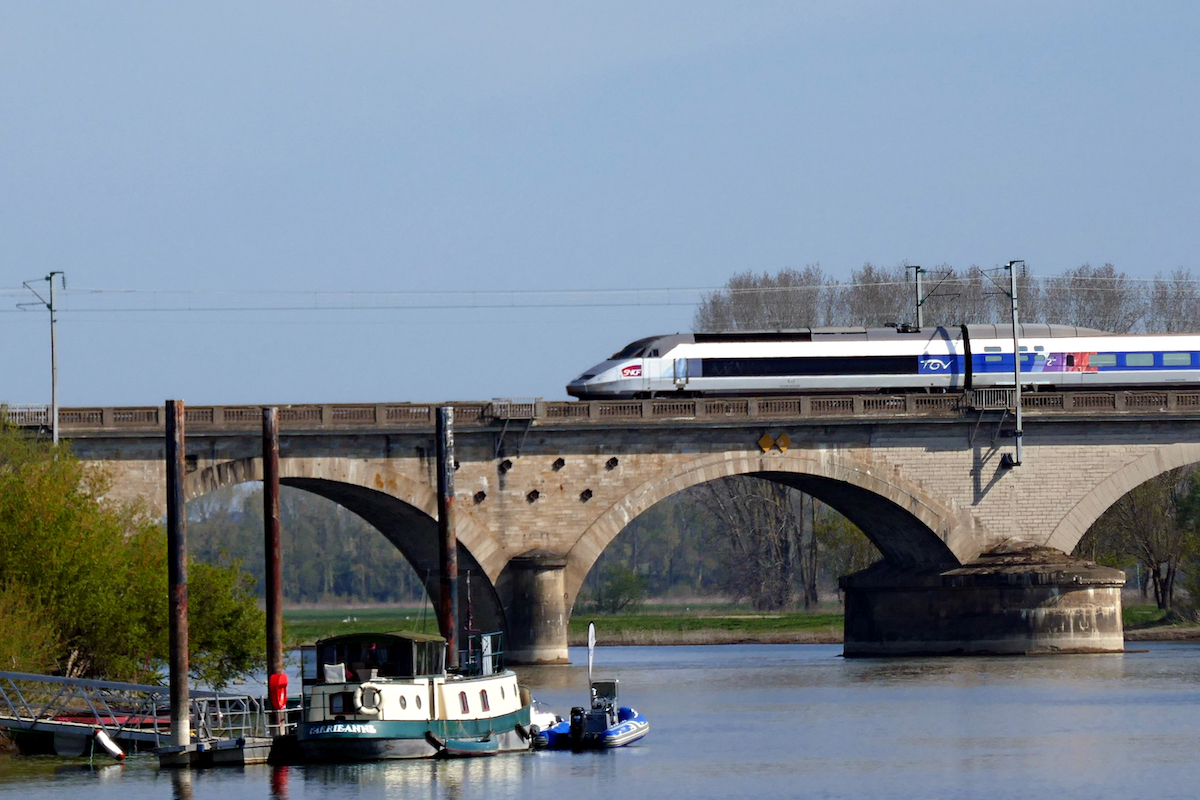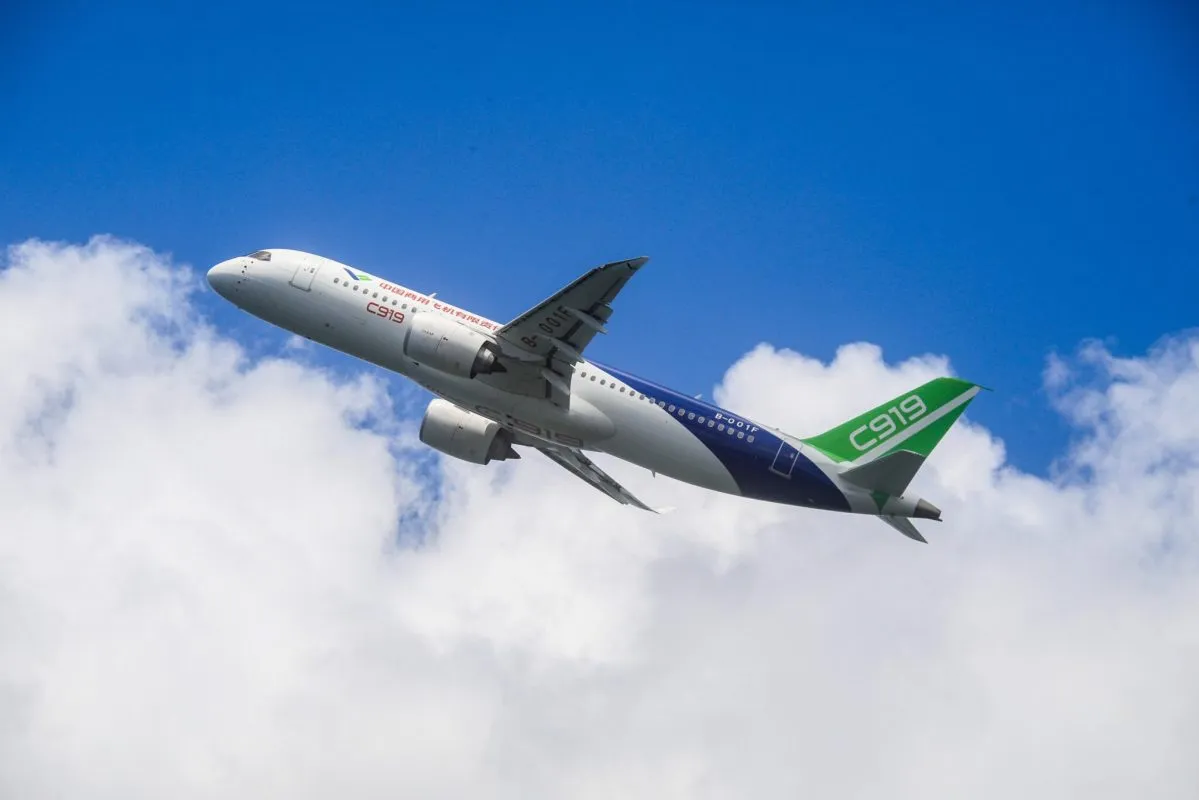Trains Offer New Promise in Europe's Quest to Cut Aviation Emissions

Skift Take
More than 60,000 people transfer daily at Paris’ busy Charles de Gaulle Airport, one of the largest airline hubs in the world. But not every traveler is making the usual dash from flight to flight: A small but growing number connect to or from a train for one leg of their journeys.
These air-rail connections — or “Train + Air” itineraries as Air France calls them — involve a flight and an intercity train on a single booking, as opposed to buying two separate tickets for the same trip. The benefit of booking them together includes protections if one leg is late and a traveler misses their connection, as well as additional credits in airline loyalty programs, something that is highly valued by frequent travelers.
These multimodal trips have been around for decades, but as the industry doubles down on promises to cut carbon emissions, they are receiving renewed interest from both airlines and European authorities. The challenge, however, is rail infrastructure, or the lack of, which limits where these connections are possible — even in rail-friendly Europe. On top of that, travelers need some basic and easier ways to navigate these rail transfers.
Air France’s Train + Air partnership with French rail operator SNCF connects the airline’s Paris hub with at least 18 destinations across France, as well as to Brussels. Elsewhere in Europe, KLM sells joint tickets with Thalys to Belgium, Lufthansa with Deutsche Bahn in Germany, and Iberia unveiled a similar partnership with Renfe in Spain in March. Air France and Lufthansa together sold at least 735,000 joint air-rail tickets annually before the pandemic, according to the airlines.
“For short travels, when you have a train, more and more, we will work with the train and SNCF … as a feeding of our hub,” Air France CEO Anne Rigail said in response to questions on the airline’s emissions reduction initiatives at the Skift Europe Forum in March.
Last year, Air France revealed plans to streamline and expand its partnership with SNCF. The airline added eight more train routes, and tried a digital solution where travelers could check in and receive a boarding pass for the rail portion of their trip in the Air France app on the Lille and Strasbourg routes. The aim was to boost the number of people who use the offering, and help meet its target of slashing domestic emissions in half by 2024.
Air France Vice President of Sustainability and New Mobilities Vincent Etchebehere said the airline sees a “growing appetite of many of our customers to favor train even when a plane solution exists.” This comes amid an increased interest among travelers for “low carbon” modes of transport, he added in an interview.
“There is a conviction within Air France that we should no longer be in opposition between train and air,” said Etchebehere.
Roughly 160,000 Train + Air itineraries were booked in 2019, he said. Etchebehere declined to provide more recent data, saying the pandemic made it “difficult to monitor those numbers.” He reiterated that both Air France and SNCF want to boost the number that, in 2019, made up a fraction of a percent of the 52.2 million travelers the airline carried globally.
Old Idea, New Goals
Multimodal travel is an old idea receiving new attention. In 1982, Lufthansa partnered with German rail operator Deustche Bahn to introduce what may have been the first official air-rail connection: the Lufthansa Airport Express, an express train that replaced flights between Düsseldorf with the airline’s Frankfurt hub.
Later developments included Swissair partnering with Swiss rail operator SBB to offer check-in and luggage tagging services at train stations from 1989 until the airline’s demise in 2002. And Air France began offering its own dual flight-train tickets with SNCF, initial known as “TGV Air,” in the mid-1990s.
What’s changed are the arguments for these tie-ups. Early on, airlines saw rail partnerships as a way to reduce the number of flights to nearby destinations at their hub airports and thus free up valuable slots for more lucrative routes. The rationale today is to cut emissions by operating fewer carbon-intensive short-haul flights and shift travelers to greener trains
“Intermodality is … key when we’re discussing how to reach the climate targets,” Deutsche Bahn Head of Transport Policy Europe Christoph Lerche said at an United Europe event in March. “We believe that close cooperation with airlines is very important.”
While there is universal agreement that replacing planes with trains reduces carbon emissions, there is disagreement on how much. A study published in March by Oxera on behalf of four aviation industry trade groups — organizations that want to protect, if not outright promote, aviation — found that eliminating all flights in Europe under 500 kilometers, or 311 miles, would reduce aviation emissions on the continent by only 3-5 percent.
Alternatively, a 2021 study by Stefan Baumeister of University of Jyväskylä in Finland, and Abraham Leung of Griffith University in Australia found that replacing all domestic flights in Finland with trains could cut the country's transportation emissions by a whopping 95 percent.
“Even existing (non-high-speed) rail can provide as fast connections as aircraft on distances up to 400 kilometers, and in case of [high-speed rail] even on distances up to 800 kilometers. Here aviation does not provide a real benefit but comes at significantly higher environmental costs,” Baumeister said when asked about their findings. However, he acknowledged that outright bans on flights, particularly to smaller regional airports, in the name of climate targets are politically challenging.
France is the only European country to date to ban flights on short routes. Germany, Italy, and Spain are considering similar legislation but have yet to finalize anything. France barred flights on routes where trains can make the journey in no more than two-and-a-half hours as part of a sweeping climate law in 2021. Air France has only cancelled three routes — Paris to Bordeaux, Lyon and Nantes, though some connecting flights are still allowed — as a result, and on all three the high-speed TGV trains already had significant market share.
And in most cases it is easier to get someone to take the train when they are only traveling from Paris to Lyon, than someone traveling from, say, New York to Lyon via Paris. Door-to-door travel time for a Parisian is likely shorter if they take then train rather than fly. However, someone who is already flying will likely book the quickest routing with little extra thought, and may need to be nudged or encouraged during the booking process to opt for the train.
“If there’s an attractive alternative, people will take the train anyway,” said Kathrin Obst, the deputy head of unit in the European Commission’s Directorate General of Mobility and Transport, at the United Europe event. The commission does not “believe” in an outright flight ban, she added.
“The way to do this is to improve the [rail] offering,” said Obst.
Analog Connections
For all of Air France’s promotion of Train + Air, one gets the picture of that they are as easy as transiting from one plane to another. That was not the case connecting from a French domestic flight to a TGV train at Charles de Gaulle earlier in April.
After disembarking, there is no signage directing a flyer to the train station nor was the connecting “flight” listed on departures boards. A traveler must know they need to proceed through arrivals and exit baggage claim for their connection. The first signage — and even then it was simply to “Trains” — is after baggage claim in the lower level of the domestic Terminal 2F. The first Air France Train + Air sign was at the airline’s office in the station where travelers still must pick up their train ticket. The digital in-app solution trialed by Air France last year has yet to be fully implemented.
“In order for Train + Air product to work, and be favored by customers, you have to put customer experience at the core,” said Etchebehere. He acknowledged that some of the aspects of the experience are “not on par” with Air France’s customer standards, for example travelers’ inability to check in for their entire trip online or on the airline’s app.
Air France intends to roll out a fully digitalized Train + Air offering, which is internally dubbed “Train + Air 2.0,” this summer, he said.
An airline spokesperson said Air France is working with the airport and SNCF to improve the signage at the Charles de Gaulle airport.
One area where Air France did excel was during the booking process. Train connections were promoted above flights when booking a connection to Brussels on the airline's website. Elsewhere in the world, travelers have said they would have booked trains — or buses — for their connections if booking engines promoted the lower-carbon modes of transport.
Next Up
Airlines and rail operators are aligned in improving the air-rail connection experience. Executives from both Deutsche Bahn and SNCF cited this in comments on replacing planes with trains at the United Europe Event.
Rail works in lieu of flights “where there is a good offer of quality with high frequency and a short duration of the trip,” SNCF Director of European Affairs Jérémie Pélerin said. But therein lies the rub: replacing flights with trains really only work where the rail infrastructure already exists.
“You can’t run a good train network without the infrastructure,” said Obst of the European Commission. Expanding rail infrastructure costs billions of dollars and takes years, if not decades, to complete limiting the ability of a broad expansion of air-rail connections.
Iberia will test the willingness of travelers to book air-rail connections with its new Ticket&Fly offering. While Madrid's Barajas airport is served by the city's metro and regional trains, travelers will need to take either of those transit options to the Chamartín or Atocha Renfe stations — a 17 or 32 minute journey from the airport, respectively, per Google Maps — to catch their rail connection. Iberia forecasts that, despite the infrastructural inconvenience, as many as 100,000 passengers could use Ticket&Fly annually.
And in Finland and the U.S., where rail networks are less developed, airlines are tapping buses to provide low-carbon ground connections. Finnair will replace most flights on two short routes from its Helsinki hub with buses in May, and Sun Country Airlines, United Airlines, and soon American Airlines are using buses to add new connections and restart old ones in the U.S.
“It will cost an enormous amount of money,” KLM CEO Pieter Elbers said last year when asked about the potential of air-rail connections to meaningfully cut emissions. “Infrastructure that has to be built by governments. That [money] could probably be used more effectively in terms of investing in synthetic fuels, [and] in single European airspace. There are certain parts that could be dealt with by train, not everything.”




